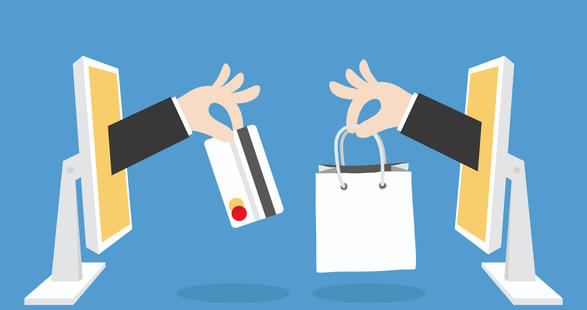Are Irish SME’s keeping pace with the changing eCommerce landscape?
For years now, the retail sector has had to endure the doomsday scenarios concerning the migration from high street retail to online shopping, or e-commerce as it is known. It would be the death of shopping as we knew it. Until recently these predictions have, anecdotally, seemed exaggerated. Several recent reports however are showing that the Irish may just finally be embracing the medium of online shopping in a manner that cannot be ignored if Irish companies are to keep competitiveness with their European counterparts.
This past Christmas, the Visa Irish Consumer Spending Index showed web-based purchases in December 2016 were up by 15.4% compared to the same month in 2015. This is just one in a deluge of recent market reports showing a move toward online retail. Trends suggest people are still browsing in physical shops before retreating to complete the purchase online. Another worrying trend for traditional retailers is an increasing confidence amongst consumers to purchase more expensive items such as white goods online.
Impact for SMEs
RIKON works daily with companies that are aware of these shifts in habits but can often feel overwhelmed when it comes to migrating their services online. The good news is that this shift can also represent a huge opportunity for those willing to innovate – a 45% increase in revenues at Irish e-commerce sites in 2016 can only be viewed as a source of potential growth for those whose business model may have gone a little stale. Indeed, a recent report from Wolfgang Digital shows just how much potential there will be in future years for those willing to invest in their online offering now. CEO Alan Coleman assesses the future landscape – “The online spend represents 6 per cent of the Irish economy. In the advanced UK market, online’s share of spend is as high as 16 per cent.”
So what does this mean in practical terms for those wishing to balance their market offering? The principal consideration must lie in consumer behaviour, and placing this at the centre of any innovations.

Factors to Influence Your eCommerce Strategy
- How do people want to buy? The answer, it appears, is via their smartphones (45% of traffic), which have finally overtaken desktop (42%) with tablets accounting for 13% of the market. The message here is clearly a development focus on mobile enablement with clear pay and checkout procedures for hand held devices.
- Similarly, retailers who use ‘conversion-focused’ formats such as Google Shopping – a program which delivers results from an amalgalm of shopping sites in response to keyword searches – performed stronger. This is an interesting insight into the early adoption characteristics of the Irish, given the service was only launched here in the fourth quarter of 2016.
- Political factors must also be taken into account – those shopping with British online retailers will almost certainly face extra charges if Britain leaves the single market, adding extra incentive for Irish shoppers to shop from Irish online retailers. The challenge here for Irish business will be replacing disincentivised UK shoppers with those from mainland Europe. Incorporating the Digital Single Market as a key channel in any eCommerce strategy will allow Irish online retailers to benefit from the forecasted growth in EU trade.
In summation, market trends are showing that the eCommerce boom, long predicted, is finally showing signs of coming to fruition. Irish companies of all sizes must keep pace with these trends and ensure their products and services are available online, to be digested in the manner preferred by consumers and in line with changing trends in the retail and political landscape.

